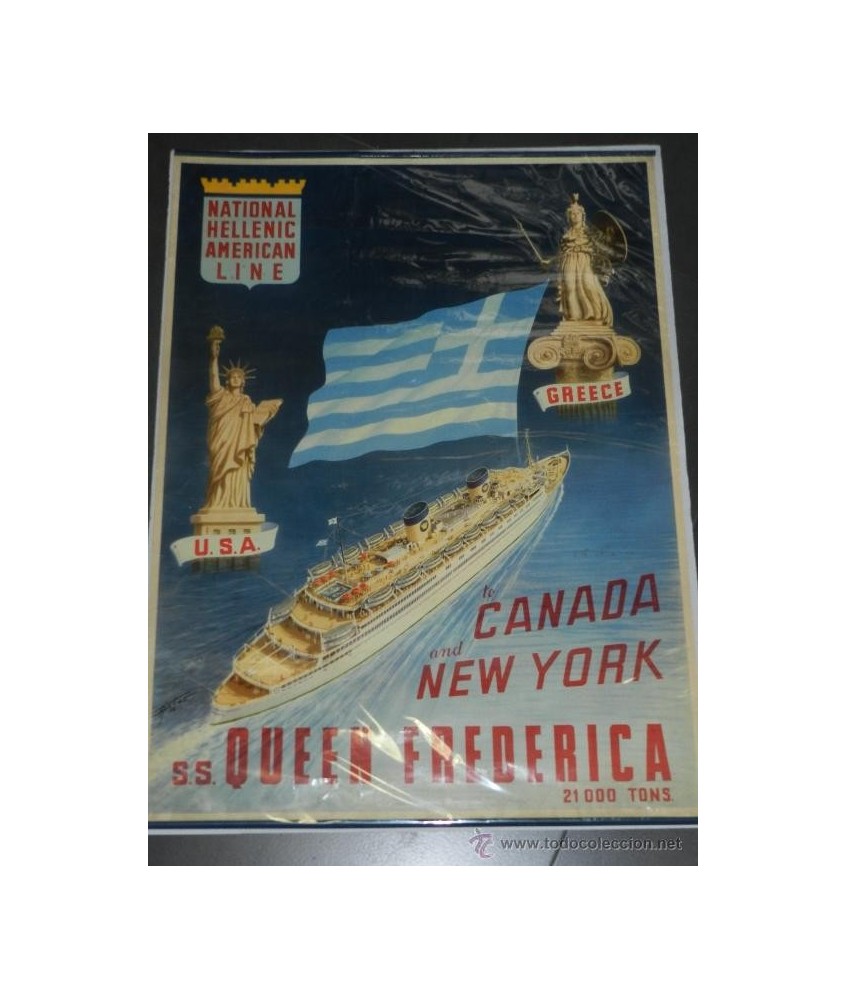


On December 23, 1954 the Atlantic was transferred to the recently formed “National Hellenic American Line,” being another subsidiary of Home Lines and she was renamed SS Vasilissa Friederiki, being Greek for Queen Frederica. However, only the English version of the name was ever used on her bow; however the Greek lettering did appear on her stern.
On December 23, 1954 the Alantic was transferred to the recently formed “National Hellenic American Line,” being another subsidiary of Home Lines and she was renamed SS Vasilissa Friederiki, being Greek for Queen Frederica. However, only the English version of the name was ever used on her bow; however the Greek lettering did appear on her stern.
During a minor refit her new accommodations were saw some changes, and loading was now as follows; 132 First Class, 116 Cabin Class as well as 931 Tourist Class passengers. Although always known as the “Queen Frederica” she was now registered at Piraeus under the name “Vasilissa Friederiki”. Having been completed, she departed Piraeus on January 29, 1955 for bound for Naples, Palermo, Halifaxand New York and she remained on this service with minor variations.
Towards the end of 1960, National Hellenic American Line decided to give this fine ship another extensive refit, which saw her lower glazed-in Promenade Deck fully plated in by steel, which added further space for a good number of additional cabins. In addition her superstructure was extended slightly further aft. Upon completion she was registered at 21,239 GRT, and she now was a two class ship accommodating; 174 First Class and 1,005 Tourist Class passengers. A magnificent full colour brochure was released, covering her interiors and her deck spaces, with ample commentary, and you will find this brochure in full on Part Three, as the author has one of these very rare treasures in his collection!
CLASSIFICATION OF THE POSTERS ACCORDING TO THEIR CONSERVATION (in bold the one corresponding to this poster):
A+ Is a flawless example of a poster rarely seen in such fine condition.
A Designates a poster in very fine condition. There may be some tears on the margins, but not noticeable. No paper loss. Colours are fresh and has no blemish.
A- There may be some slight fold marks, tear or other minor defect, but most unobtrusive. Successful restoration if restored.
B+ If some restoration it is not immediately evident.
B Designates a poster in good condition. There may be some tears. Blemish or paper loss, but not in any crucial design area. Colours are fresh and the poster has a very good appearance.
B- Restoration may show some defects. Colours along the fold marks are faded.
C+ Restorations are visible.
C Designates a poster in fair condition. Tears, blemish, fold marks and or paper loss are more pronounced or may slightly affect the image of the poster. Colours may be faded.
C- Requires restoration.